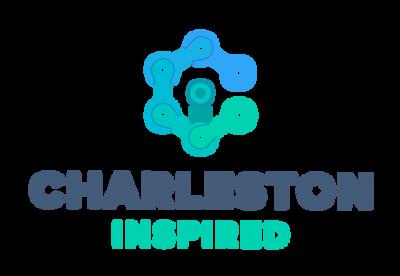



PRODUCED FOR THE COMMUNITY BY:







PRODUCED FOR THE COMMUNITY BY:


Innovation in the Charleston region of South Carolina takes many forms each one helping to elevate quality of life, strengthen the economy, and build a more resilient and thriving community. Communities that prioritize innovation-driven growth unlock lasting economic, social, and financial benefits for everyone.
In early 2025, the Charleston Regional Development Alliance, in collaboration with community partners, launched a region-wide commitment to advancing an innovation-driven economy. The following benchmarks indicate how our region is progressing on this shared innovation journey

In general terms, innovation in business is the process of generating new ideas or approaching existing products, services, business models, and concepts in new ways.
As the saying goes, “steel sharpens steel.” In that spirit, economic developers welcome the practice of benchmarking against competitive regions those we both compete with and learn from when attracting investment and driving growth. Our region is performing well and can be an inspiration for (or be inspired by) a handful of aligned communities.
This report draws on data from the StatsAmerica Innovation Intelligence Index, offering a comparative look at our region’s business dynamics, talent pipeline, and economic growth our key indicators alongside competitive metros including Austin, Jacksonville, Nashville, Raleigh, and Seattle.
The latest StatsAmerica Innovation Intelligence Index tracks how regions compete in business dynamics, talent, and economic growth. Here’s how the Charleston region ranks, shown alongside a few other metros for comparison.
Charleston may be the 71st largest US metro by population, but its innovation-driven economy ranks 34th among 380+ metros nationwide

AUSTIN, #2
Innovation Index Rank Among U.S. Metros
NASHVILLE, #11
9 indicators measuring business churn and establishment formation. Business Dynamics data gauges the competitiveness of a region by measuring the entry and exit of individual firms.
More than 1 in 10 businesses in the Charleston metro is newly established, ranking the region in the top 10% of all U.S. metros for new business formation. This high rate reflects Charleston’s strong entrepreneurial spirit and business-friendly environment.
Featured Indicator:
Ratio of New Businesses to All Businesses
116,000 6,000
Around 1,600 of those are startups and launched in the past year, highlighting the region's growing reputation as a hub for innovation and entrepreneurship
16 indicators measuring venture capital, foreign direct investment, and proprietorship. Business Profile data gauges the resources available to local entrepreneurs, businesses and business owners.
While the Charleston region ranks highly in proprietorship rates, venture capital remains a challenge to future growth.
Indicators:

CHARLESTON RANKS 119TH AMONG APPROXIMATELY 380 U.S. METROS
11 indicators measuring educational attainment, university R&D spending, STEM degree completions, share of high-tech industry sector employment, and others. This gauges the propensity of a region’s population and labor force to have the skills to engage in innovative activities.
Educational attainment is high, with 42% of the Charleston region’s residents aged 25+ holding a bachelor’s degree or higher, compared to 36% nationally. This strong educational attainment attracts innovative employers, though opportunities exist to further boost innovation by increasing the number of STEM degrees awarded locally In the 2022–23 academic year, 1,542 STEM degrees were awarded by Charleston-area colleges and universities (including certificates, two-year, four-year, and graduate degrees), down from more than 1,700 a decade prior.
Featured Indicator:
STEM (Science, Technology, Engineering & Math) Degrees Conferred per 1,000 Residents

CHARLESTON RANKS 153RD AMONG APPROXIMATELY 380 U S METROS
10 indicators measuring gross domestic product, patents, industry diversity, and growth in high-tech and overall employment Employment and Productivity data gauges a region’s economic growth and direct outcomes of innovation
The Charleston region ranks in the top 25% of U S metros for industry diversity, a key indicator of economic resilience. Over the past two decades, high-tech employment has increased from 8% (21,000 jobs) to more than 12% (50,300 jobs). “High-tech” includes at least 50 four-digit NAICS (North American Industry Classification System) codes in the information technology, engineering, high-tech manufacturing, research & development, and other sectors, as defined by the U S Bureau of Labor Statistics
Featured Indicator:
AXIOS RECENTLY NAMED CHARLESTON AXIOS RECENTLY NAMED CHARLESTON AS ONE OF “AMERICA’S NEW AS ONE OF “AMERICA’S NEW INNOVATION HOTSPOTS” INNOVATION HOTSPOTS”
due to a remarkable 96% increase in patents per capita over the past decade (2012–2022), compared to 11% nationally Securing patents remains a key indicator of a region’s innovative capacity Percent of Total Employment in High-tech Industry Sectors

CHARLESTON RANKS 96TH AMONG APPROXIMATELY 380 U.S. METROS
10 indicators measuring broadband, income and poverty, net migration, and related topics. Economic Well-being data gauges the regional standard of living relative to economic performance.
The Charleston region ranks in the top 25% of metros for well-being, with rising incomes outpacing inflation and poverty rates declining. However, expanding broadband access could further support innovation and economic growth. While Charleston’s overall broadband access is above average, the region has a high reliance on cellular-only devices.
Featured Indicators:
Percent of Individuals below Poverty
Percent of Households with Cellular-only Broadband Access
Austin
Becoming an innovation-driven hub could bring the Charleston region an additional $13 billion in Gross Regional Product (GRP) and $10 billion in annual earnings by 2040, driving faster economic growth and opportunity, according to a recent analysis by Ernst & Young Higher trajectory (4.2%)
BY 2040:
GRP per capita projections
$130 billion in annual GRP Current trajectory: $117 B
$144,000 Average earnings per job Current trajectory: $127K
$10+ billion more in pocketbooks every year and higher quality of life for region’s residents

trajectory (3.5%)
Source:EYAnalysis-CharlestonInspired,DiscoverWhat’sPossible



NavigateCHS.org is a new forum where Charleston innovation grows. The crowdsourced tool allows the Charleston region’s innovation community to connect digitally, sharing information, forging relationships with one another, and driving uptake of new ideas and resources.
As a member of our community, you’re invited to play a part in this exciting movement. Stay apprised of our progress by visiting our website or following us on social media.

Innovation Intelligence Index by StatsAmerica.org (powered by Indiana University’s Kelley School of Business); US Census Bureau’s American Community Survey; Chmura Economics’ JobsEQ, March 2025

